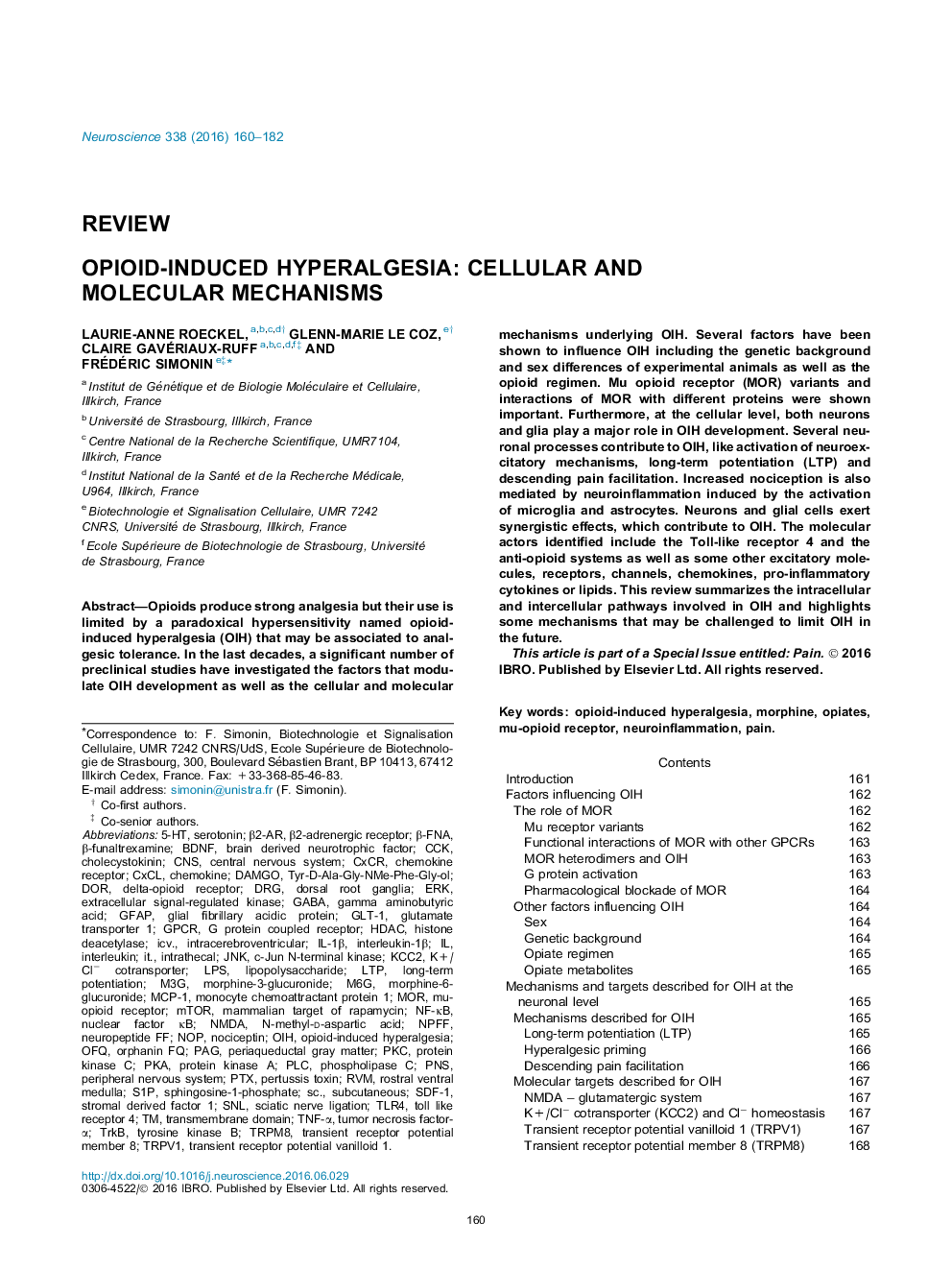| Article ID | Journal | Published Year | Pages | File Type |
|---|---|---|---|---|
| 5737918 | Neuroscience | 2016 | 23 Pages |
â¢The cellular and molecular mechanisms of opioid-induced hyperalgesia (OIH).â¢The different factors that influence the development of OIH.â¢The different molecular targets that are critically involved in OIH.
Opioids produce strong analgesia but their use is limited by a paradoxical hypersensitivity named opioid-induced hyperalgesia (OIH) that may be associated to analgesic tolerance. In the last decades, a significant number of preclinical studies have investigated the factors that modulate OIH development as well as the cellular and molecular mechanisms underlying OIH. Several factors have been shown to influence OIH including the genetic background and sex differences of experimental animals as well as the opioid regimen. Mu opioid receptor (MOR) variants and interactions of MOR with different proteins were shown important. Furthermore, at the cellular level, both neurons and glia play a major role in OIH development. Several neuronal processes contribute to OIH, like activation of neuroexcitatory mechanisms, long-term potentiation (LTP) and descending pain facilitation. Increased nociception is also mediated by neuroinflammation induced by the activation of microglia and astrocytes. Neurons and glial cells exert synergistic effects, which contribute to OIH. The molecular actors identified include the Toll-like receptor 4 and the anti-opioid systems as well as some other excitatory molecules, receptors, channels, chemokines, pro-inflammatory cytokines or lipids. This review summarizes the intracellular and intercellular pathways involved in OIH and highlights some mechanisms that may be challenged to limit OIH in the future.
